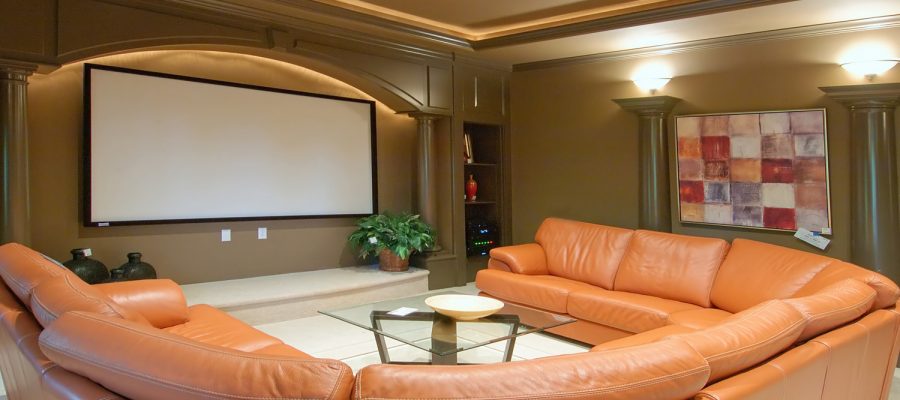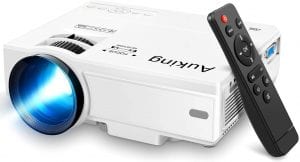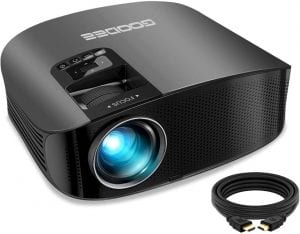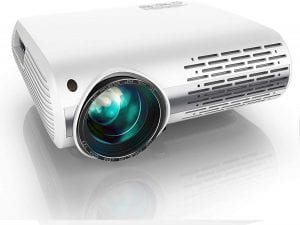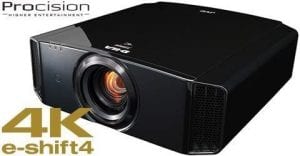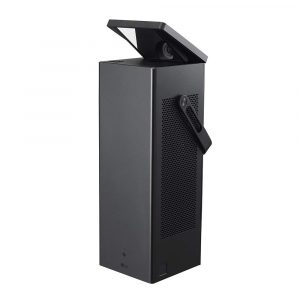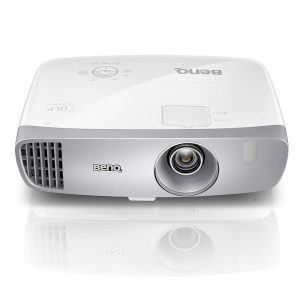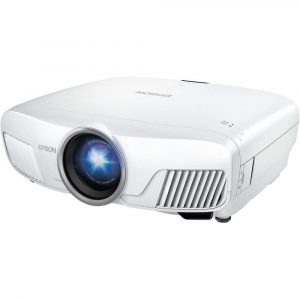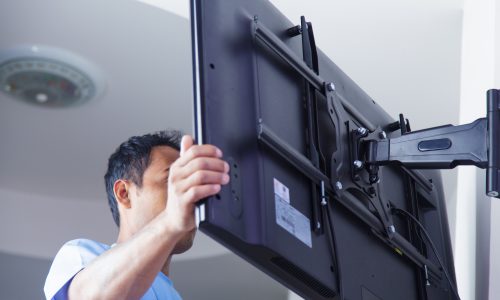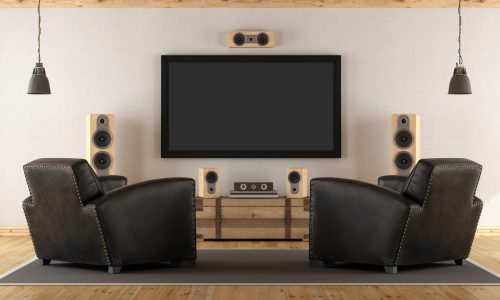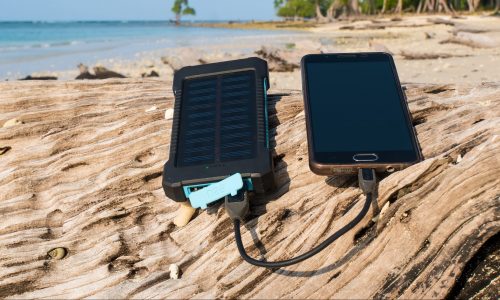The Best Home Theater Projector
We looked at the top 7 Home Theatre Projectors and dug through the reviews from 11 of the most popular review sites including and more. The result is a ranking of the best Home Theatre Projectors.
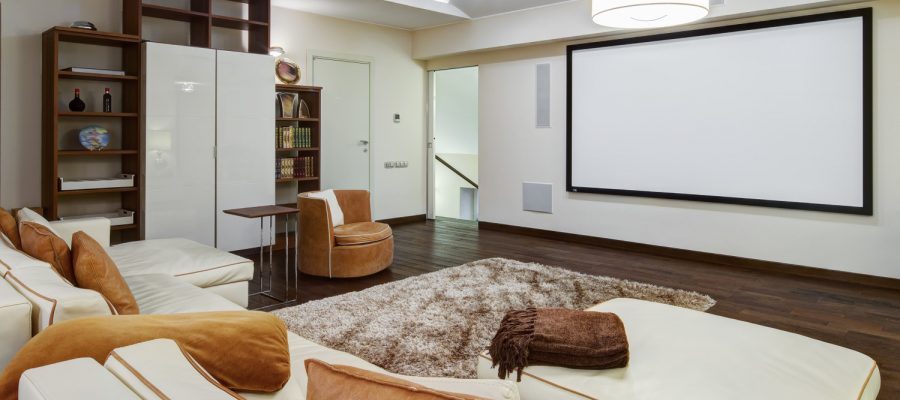
Our Review Process
Don't Waste Your Money is focused on helping you make the best purchasing decision. Our team of experts spends hundreds of hours analyzing, testing, and researching products so you don't have to. Learn more.
Our Picks For The Top Home Theatre Projectors
- 1. AuKing Full HD Home Theater Mini Projector
- 2. GooDee 1080P HD Video Home Theater Projector
- 3. YABER Y30 Native 1080P Home Theater Projector
- 4. JVC DLA-X590R Home Theater Projector
- 5. LG HU80KA 4K UHD CineBeam Smart Home Theater Projector
- 6. BenQ HT2050A Projector
- 7. Epson Home Cinema 5040UB Projector
Not only does this home theater projector have an advanced cooling system, but its lamp life is 55,000 hours! The projector can be used with just about any device, including a camera, cell phone, gaming console, television or laptop. It also features built-in speakers and has a 32 to 170-inch projection display size.
Remote Control IncludedThis home theater projector is compatible with full HD 1080P.
This home theater projector has been upgraded to provide a picture that's 80% brighter than other models. The bulbs are also energy efficient and designed to last for 50,000 hours before needing to be replaced. Additionally, you'll find a set of focus dial that allow you to get the image just right.
Indoor and Outdoor UseAll the ports you need to connect your favorite media devices are built-in to this home theater projector.
Thanks to the built-in vertical and horizontal keystone correction function, the image on this home theater projector is always a perfect rectangle. Projection size ranges from 45 inches to 200 inches, depending on distance. The optical glass lens also works to produce crystal clear images.
Attractive DesignOne of the most portable home theater projectors, this model weighs just 6 pounds.
This home theater projector uses optical technology to upscale video to 4K resolution. The result is a crisp, clear display, especially in darker scenes, and a wider color gamut than you'll see with other projectors.
Crisp DisplayCrisp display and darker darks. Uses optical technology to upscale to 4K resolution.
Buying Guide
Home theaters and offices have long relied on projectors to provide content. For home theaters, though, projectors remain popular for their ability to provide high-quality video on oversized screens. You can access a wide range of projectors at varying prices, from high-powered units designed to be mounted, to moderately-priced units that are portable while also providing crisp images.
As you start projector shopping, you’ll probably experience some technology that’s unfamiliar, especially if you haven’t paid much attention to TV technology in recent years. The biggest thing to consider is 4K Ultra HD versus 1080P. While 1080P is high definition, it consists of only 1920 by 1080 pixels, whereas 4K Ultra HD has 3840 by 2160 pixels. The term “4K” comes from the horizontal pixels, which at 3,840 is close to 4,000.
Will you notice a difference? A 4K TV has nearly four times the pixels on a screen when compared to a 1080P TV. But projectors aren’t TVs, so when you’re talking about 4K capabilities in this arena, it’s actually a chip built into the projector. The small size of that chip in projectors makes this challenging, which is why 4K projectors are still less common than 1080P.
However, some projector manufacturers have made up for that by creating technology that can give the appearance of 4K Ultra HD. This provides a far better picture than you would have had if you went with a strictly 1080P projector. But there are more factors contributing to the picture a projector outputs than whether it’s 4K or 1080P. When looking at projectors, it’s especially important to choose one that can handle the room in which you’ve chosen to use it.
If, like many consumers, you’re buying a projector for a movie room, you’ll need one that can display dark colors expertly even with the absence of light in the room. Much harder to find, though, is a projector that handles a well-lit room well. Knowing in advance that you’re putting this demand on your projector will help you choose one that provides a beautiful picture for years to come.
Why we recommend these home theatre projectors?
Products Considered
Products Analyzed
Expert Reviews Included
User Opinions Analyzed
Our experts reviewed the top 7 Home Theatre Projectors and also dug through the reviews from 11 of the most popular review sites including and more. The result is a ranking of the best of the best Home Theatre Projectors.
DWYM is your trusted roduct review source. Our team reviews thousands of product reviews from the trusted top experts and combines them into one easy-to-understand score. Learn more.
What to Look For
- If you want the best picture, you’ll need to look for 4K Ultra HD technology. This technology results in a crisp, vivid image. However, some projectors use technology to upscale a 1080p chip to 4K resolution. They also get great results.
- The contrast ratio is also important, especially if you’ll be using it in a dark room like a home theater.
- Color accuracy is also important in a projector. If a scene has flesh tones that come across as yellow, it can disrupt the viewing experience. The GooDee 1080P HD Video Home Theater Projector has impressive color accuracy.
- Projectors are built to work with external components, so ports should be a big part of your decision. Some models have two full-speed HDMI 2.2-compatible inputs that can convert 1080p content to HDMI. Compare that to the other projectors, which have only one HDMI input.
- Once you get your projector, you’ll need to install it. Although you can pay extra for professional installation, chances are you can set them up yourself. Look for a model with built-in presets for various needs, as these make it easy to do it yourself.
- In some cases, you may want to mount your projector from a ceiling. If this is the case, check to make sure you’ll have the mount you need. Certain projectors need a specific type of mount, and they typically aren’t included with the unit. The weight of some projectors makes them difficult to suspend from ceilings, while other models work with universal mounts.
- Before you buy, consider where you’ll be using the projector. If you’re dealing with a smaller space, look for a projector that uses a shorter-throw lens that helps it project a larger-size image in a small room.
- If you’re looking for a projector you can pack up and take with you, the YABER Y30 Native 1080P Home Theater Projector may be the best option. At only six pounds, it’s easy to transport. The other projectors could be transported, as well, but the size of some may make them less desirable for toting around or packing away when you’re not using them.
- These days, apps are an important part of any video experience. Consider a model that has exclusive Smart TV streaming, which means you can hook the projector up and access content from providers like Hulu, Netflix and Amazon Prime. With other projector types, you’ll need a streaming stick for the same functionality.
- Of course, you’ll want to keep your budget in mind when purchasing a home theater projector. You’re sure to find one to fit your budget, no matter how big or small.
More to Explore
Although Woodville Latham and his sons, Otway and Gray, have long been credited with inventing the first projector, a German priest was actually the first to write about the topic of projecting images onto a screen. In 1646, Athanasius Kircher brought the concept of the “magic lantern” to light in a publication called “Ars Magna Lucis et umbrae.” This magic lantern had been used in religious practice for years, as religious practitioners learned to project images on a screen using light and mirrors. But Latham and his sons revolutionized projection in 1895 when they came up with a device to project images on a large screen.
